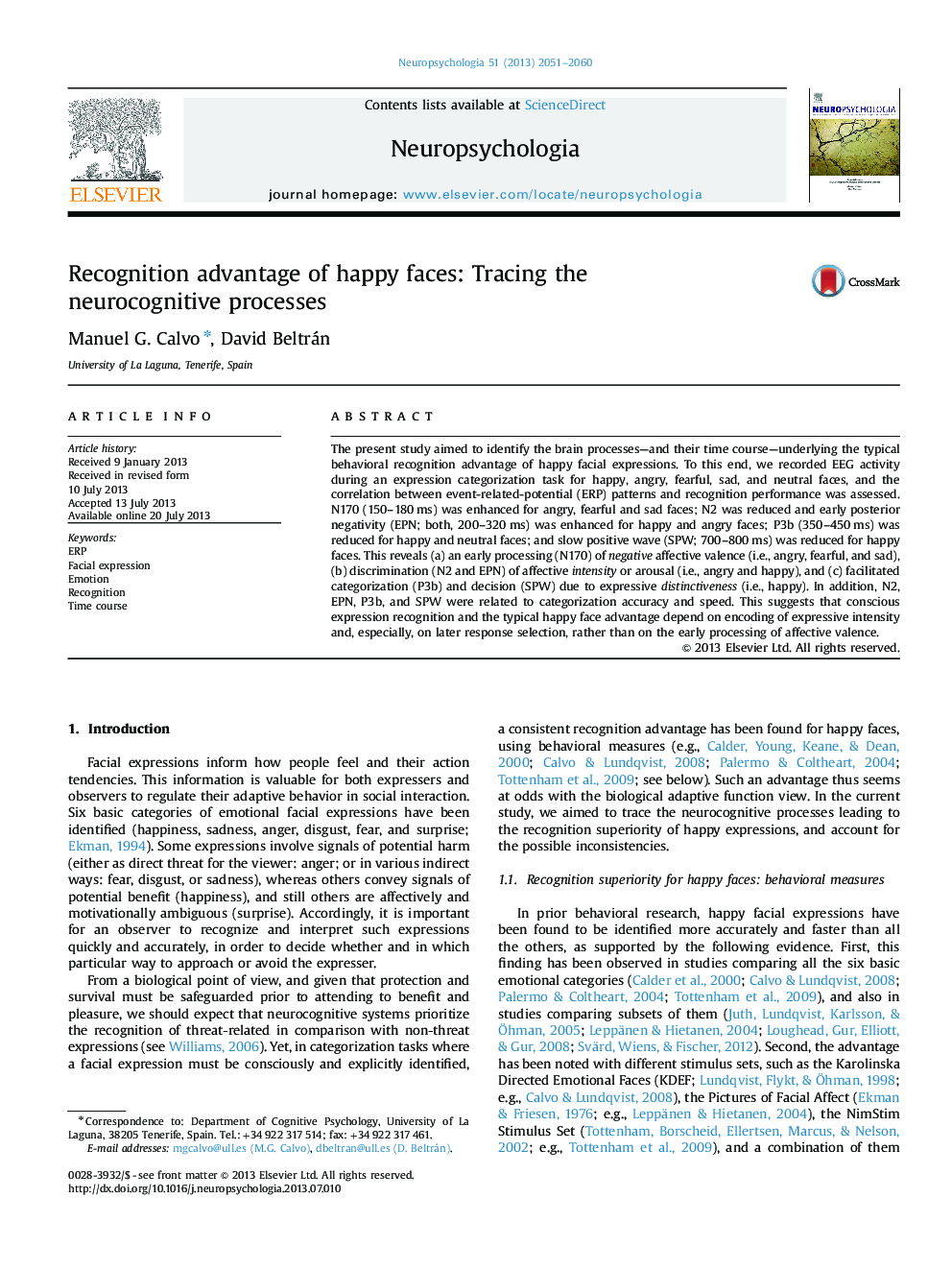| Article ID | Journal | Published Year | Pages | File Type |
|---|---|---|---|---|
| 10464799 | Neuropsychologia | 2013 | 10 Pages |
Abstract
The present study aimed to identify the brain processes-and their time course-underlying the typical behavioral recognition advantage of happy facial expressions. To this end, we recorded EEG activity during an expression categorization task for happy, angry, fearful, sad, and neutral faces, and the correlation between event-related-potential (ERP) patterns and recognition performance was assessed. N170 (150-180Â ms) was enhanced for angry, fearful and sad faces; N2 was reduced and early posterior negativity (EPN; both, 200-320Â ms) was enhanced for happy and angry faces; P3b (350-450Â ms) was reduced for happy and neutral faces; and slow positive wave (SPW; 700-800Â ms) was reduced for happy faces. This reveals (a) an early processing (N170) of negative affective valence (i.e., angry, fearful, and sad), (b) discrimination (N2 and EPN) of affective intensity or arousal (i.e., angry and happy), and (c) facilitated categorization (P3b) and decision (SPW) due to expressive distinctiveness (i.e., happy). In addition, N2, EPN, P3b, and SPW were related to categorization accuracy and speed. This suggests that conscious expression recognition and the typical happy face advantage depend on encoding of expressive intensity and, especially, on later response selection, rather than on the early processing of affective valence.
Related Topics
Life Sciences
Neuroscience
Behavioral Neuroscience
Authors
Manuel G. Calvo, David Beltrán,
